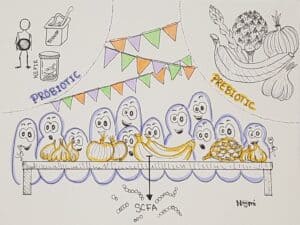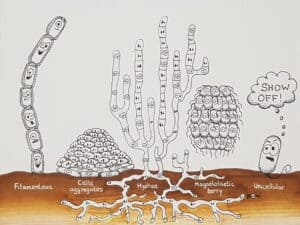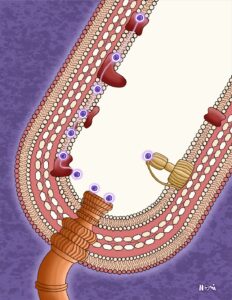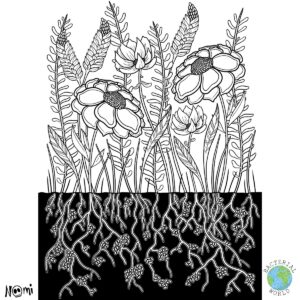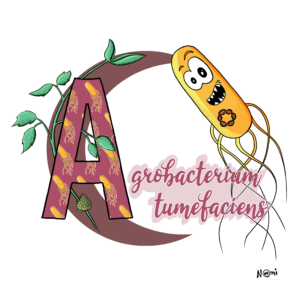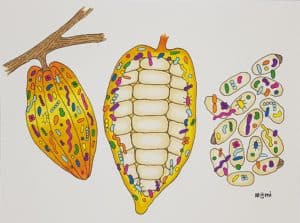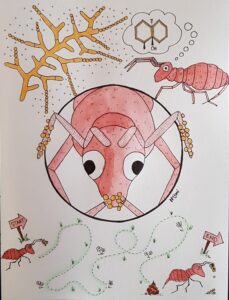Have you heard of bacterial glue?
Glue produced by bacteria so that they stick themselves to (almost) any kind of surface?
Bacterial glue that if you covered a space the size of your index fingernail with it, it could hold a weight of up to 680 kg. This is almost ten people! With one fingernail full of bacterial glue! Are bacteria super strong or what?
Okay, you might ask yourself, why would bacteria need to produce such a strong glue? What are they trying to stick together?
Let’s have a look at this bacterial superhero and its superpower in more detail.
Meet Caulobacter crescentus and its superpower
The superhero that produces the strongest glue known in microbes is Caulobacter crescentus.
Caulobacter might even produce the strongest glue found in nature. Its glue is stronger than the ones that geckos produce on their toes to stick to surfaces. And yes, these animals can walk anywhere thanks to their sticky toes!
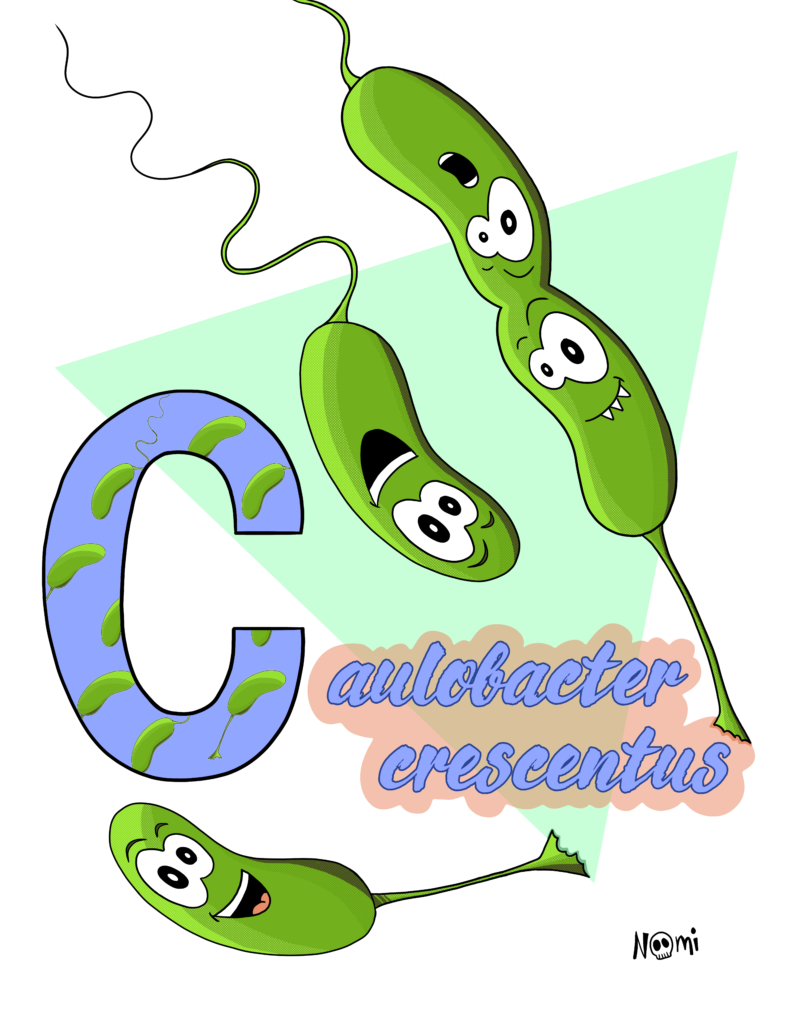
So, what does Caulobacter add to its glue to make it so sticky?
Sugar! Lots of different sugars create a glue that helps Caulobacter to stick to almost any surface. And because Caulobacter usually lives in water, its super glue is also water-resistant. This is also why the glue is so important for Caulobacter bacteria to grow.
Bacterial glue for almost any surface
To grow and reproduce, Caulobacter bacteria build biofilm houses. These biofilms protect the bacteria from the surroundings and help them become a community and support each other.
But to build a biofilm house, bacteria need a base. Just as you would start building a strong and stable base for your house, so do bacteria.
When Caulobacter decides to build a base for its biofilm house, it starts by growing a so-called stalk. This stalk is a long extension that grows out of the bacterium on one side.
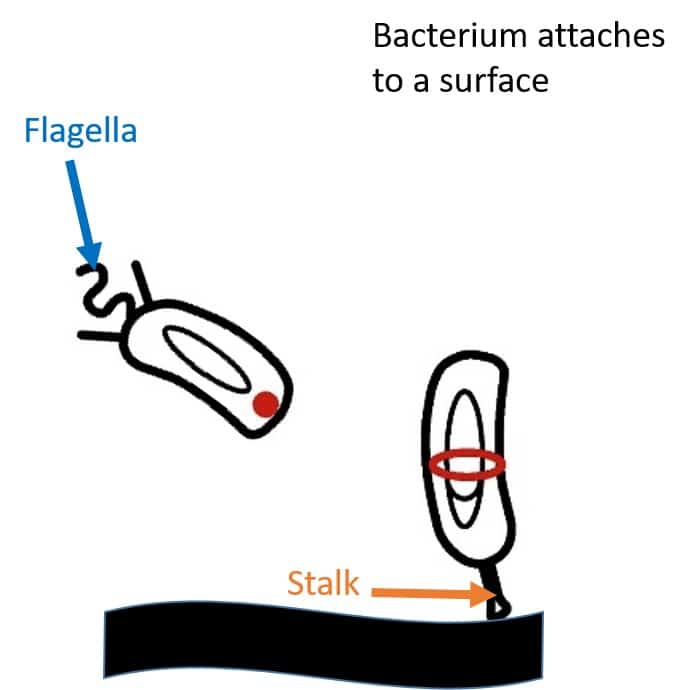
Once this stalk attached to the surface, the Caulobacter produces its super glue. The glue drips out of the stalk and glues the bacterium to the surface. Now, the bacterium is strongly connected to the surface and can start growing.
Glued bacteria divide and grow biofilms
When bacteria grow, they divide their cells in the middle. Usually, when bacteria divide, they produce two identical cells. These are sibling cells that look the same and have the same abilities.
But the interesting thing about Caulobacter is that it produces two different sibling cells. They do not look the same and they have different abilities and goals.
Let’s look at what happens with our Caulobacter bacterium that is glued to a surface.
The bacterium gets longer until it divides in the middle. But when the cell divides, one end remains glued to the surface. The other end will lose the connection to its sibling and thus, to the surface.
This free sibling cell has a flagellum where the other one has the stalk. And thanks to the flagellum, this sibling cell is free to swim away.

So, the free sibling cell swims to a new place to find a new location where it can attach to. Once it found a new place to live, it loses the flagellum and instead grows a stalk. It now glues itself to the surface and the cycle starts from the beginning.
Like this, Caulobacter covers as much surface as possible until the base of the house is full of bacteria. After that, it starts growing on top of each other to finally build the top levels of the biofilm house.
And this is how the Caulobacter crescentus glue helps the bacterium to grow and survive.
Bacterial glue in the tube?
Researchers hope that one day we could use the Caulobacter crescentus glue for our daily lives. This bacterial glue would be biodegradable and thus better for the environment.
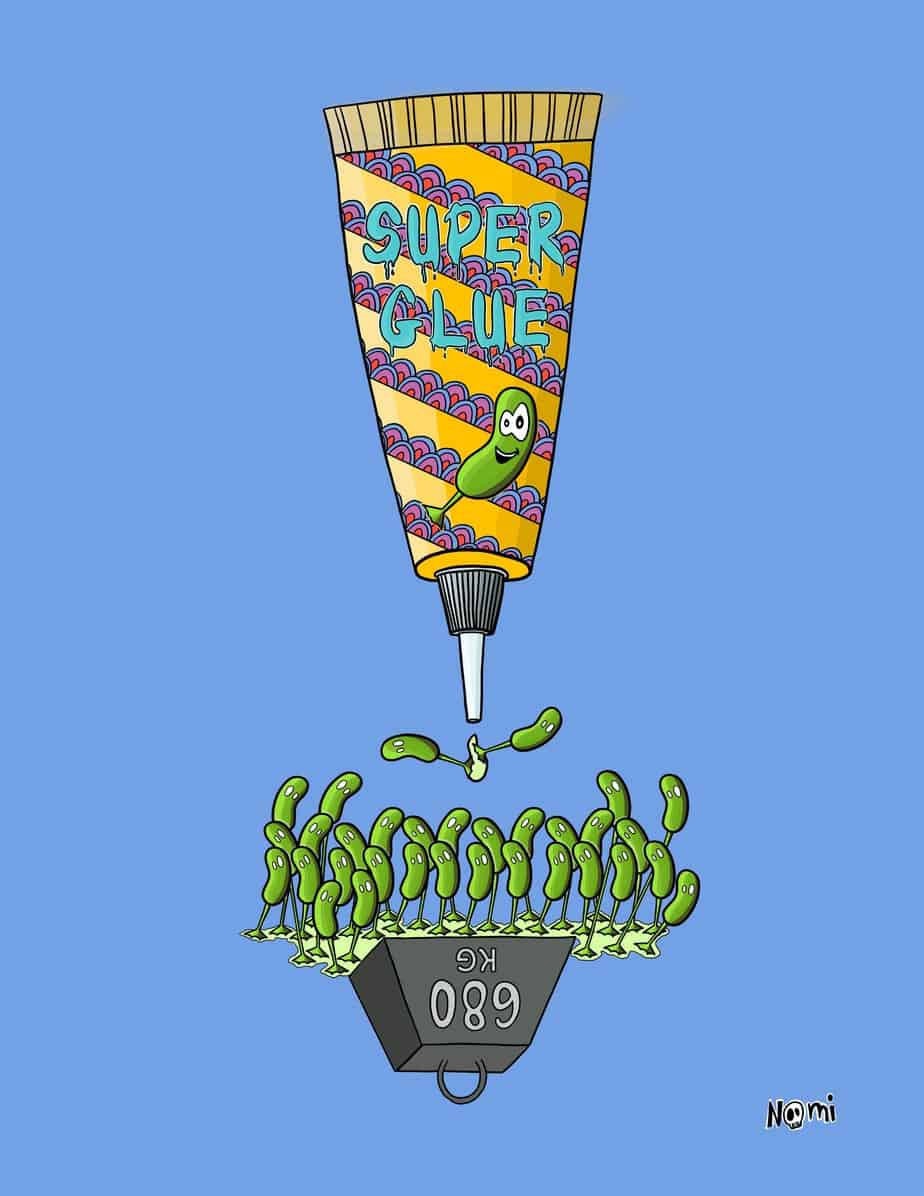
What is also remarkable about the Caulobacter crescentus glue is that it is stable in water. Since Caulobacter lives in water, it needs to make sure that it remains stuck to the chosen surface. Hence, it produces such a strong glue so its biofilm house won’t get washed away in the water.
Who would have thought that bacterial glue was a thing? That bacteria produce something so strong? But these are the things most organisms do to assure their own survival.

